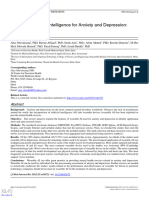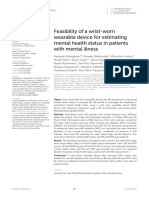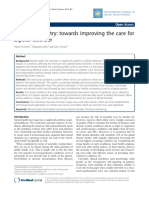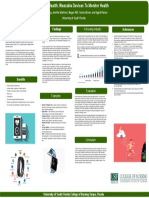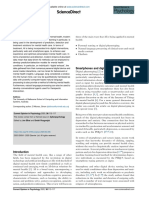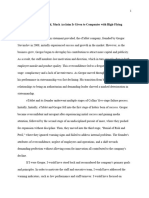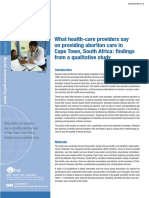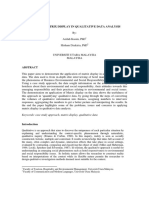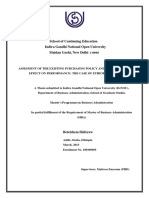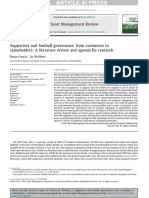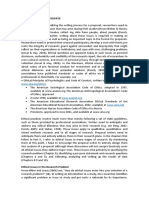0% found this document useful (0 votes)
83 views8 pagesFinal Draft Proposal Capstone - Docx64b9db062d30c33642
Wearable devices for individuals with depression and anxiety aim to improve diagnosis and intervention, thereby reducing hospital visits. The document discusses using wearable devices to measure symptoms like heart rate variability and physical activity in patients with depression. This continuous objective monitoring could help healthcare providers identify issues sooner and improve treatment with counseling and medication, or reduce emergency visits by enabling constant tracking of patients.
Uploaded by
Bon MuliCopyright
© © All Rights Reserved
We take content rights seriously. If you suspect this is your content, claim it here.
Available Formats
Download as DOCX, PDF, TXT or read online on Scribd
0% found this document useful (0 votes)
83 views8 pagesFinal Draft Proposal Capstone - Docx64b9db062d30c33642
Wearable devices for individuals with depression and anxiety aim to improve diagnosis and intervention, thereby reducing hospital visits. The document discusses using wearable devices to measure symptoms like heart rate variability and physical activity in patients with depression. This continuous objective monitoring could help healthcare providers identify issues sooner and improve treatment with counseling and medication, or reduce emergency visits by enabling constant tracking of patients.
Uploaded by
Bon MuliCopyright
© © All Rights Reserved
We take content rights seriously. If you suspect this is your content, claim it here.
Available Formats
Download as DOCX, PDF, TXT or read online on Scribd
/ 8
